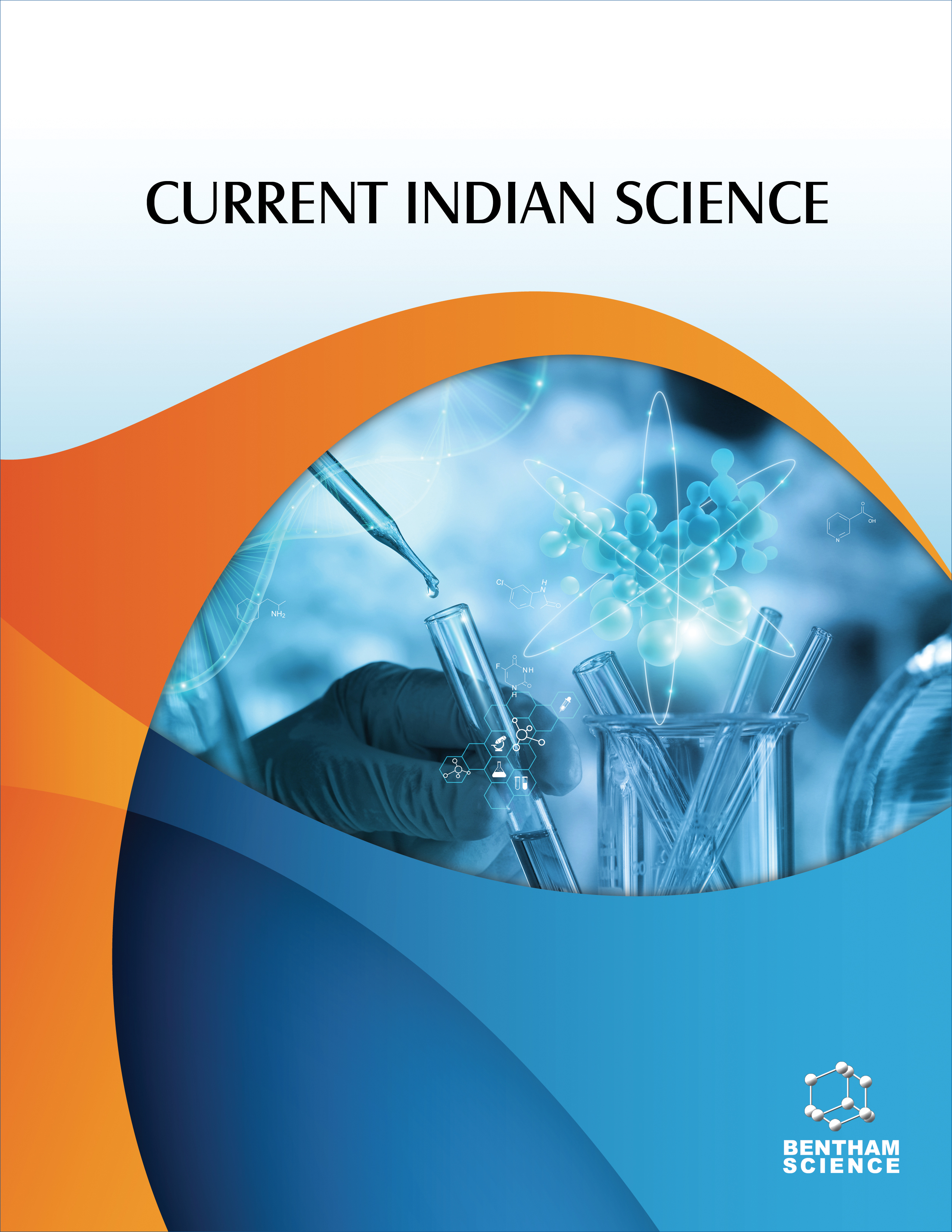-
oa Chemical Composition and Biological Activities of Natural Essential Oil Extracted from Flowers of Cassia sophera Linn.
- Source: Current Indian Science, Volume 3, Issue 1, Jan 2025, e2210299X338639
-
- 22 Sep 2024
- 04 Nov 2024
- 01 Jan 2025
Abstract
Natural essential oil comprises a galaxy of low-molecular-weight (usually less than 500 daltons) and volatile phytoconstituents that exhibit a handful of biological and pharmaceutical properties; they exhibit several applications chiefly in agriculture, cosmetic, perfumeries, and food industries.
The extraction of essential oil from fresh flowers of C. sophera was performed by hydrodistillation, and the determination of its chemical composition was carried out by Gas Chromatography/Mass Spectrometry (GC-MS). The antibacterial activity of the essential oil was executed by the disc diffusion method against the four pathogenic bacteria. 1,1-Diphenyl-2-picrylhydrazyl (DPPH) was also performed for free radical scavenging assay, and a scanning electron microscopic study was also executed to get an idea of the effect of C. sophera essential oil on bacterial morphology.
The GC/MS analysis indicated that the essential oil is constituted primarily of aromatic compounds (68.75%), and the principal compounds are the dialkyl phthalates esters (58.32%). The zones of inhibition range from 8-16 mm in the case of Gram-negative E. coli, whereas, in Gram-positive S. aureus, these range from 7-13.5 mm. The Minimum Inhibitory Concentration (MIC) was found to be 0.3 mg/mL against all the Gram-negative bacteria tested and 0.4 mg/mL against the Gram-positive bacteria S. aureus. The oil also showed moderate antioxidant properties by scavenging 1,1-diphenyl-2-picrylhydrazyl (DPPH) radical with an IC50 value of 126 μg/mL.
As per the present study, the essential oil of C. sophera flowers may be suggested as a new potential source of natural antimicrobial and antioxidant agents.



